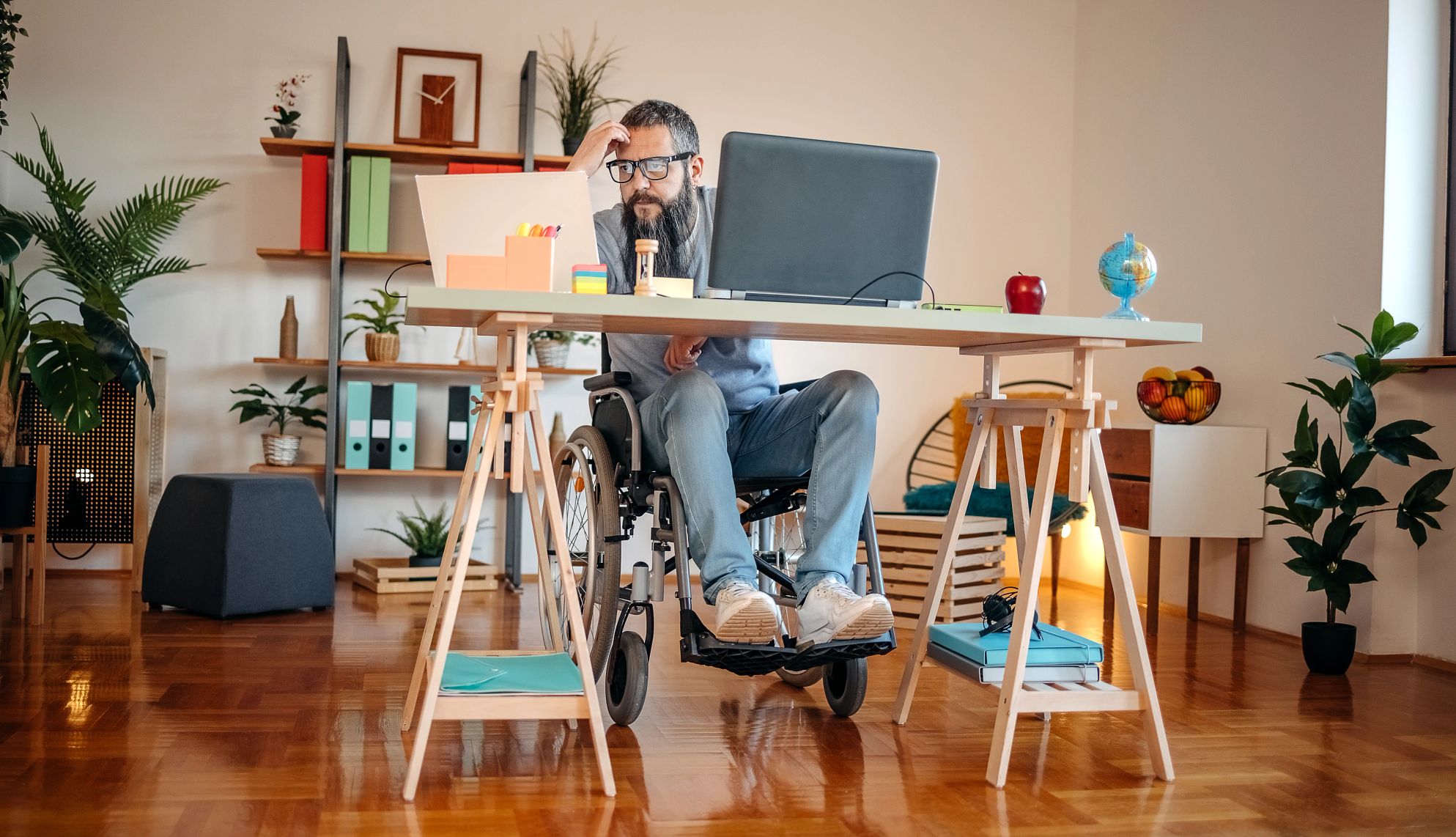AARP Hearing Center


Remote work is creating new opportunities for all jobseekers, but especially so for older adults with disabilities, according to a new study.
Researchers from the Center for Retirement Research at Boston College (CRR) found that between 2018 and 2022 there was an 11.6 percent increase in telework employment for people with disabilities between the ages of 51 and 64. In fields where remote work is not possible, employment opportunities for disabled workers were essentially flat during that period.
That five-year stretch also saw many workers shifting to fully remote work. It was also noteworthy for being a time of low unemployment, when businesses often are more open to hiring workers they otherwise might not have fully considered, such as older adults or people with disabilities.
The CRR took those factors into account in their study.
“What we found was that, even after controlling for these other factors that may have affected the labor market, nearly all of the employment gains for older people with disabilities was in teleworkable jobs, which suggests that remote work has played a prominent role in improving employment for people with disabilities,” says Siyan Liu, a research economist at CRR and co-author of the report.
There are roughly 5.7 million people with disabilities working nationwide, according to October 2024 numbers form the U.S. Census Bureau. That’s over 500,000 more workers since September 2021. The benefits of remote work for both jobseekers and businesses likely have contributed to that growth.
“Theoretically, remote work would help in both employee and the employer,” Liu says. “From the workers’ perspective, obviously the cost for them to go to work is a lot lower. Now they don't have to commute anymore and at home they may already have accommodations in place that just makes it more comfortable for them to work. From the employers’ perspective … it may be just less costly for them now to hire people with disabilities due to access to remote work.”





























































More From AARP
15 High-Paying Jobs — No Degree Necessary
Some positions can offer six-figure incomes without a college education10 Jobs Nobody Does Anymore
Pneumatic tube operator? Social Security drops obsolete occupations used to deny disability claims8 Things Your Boss Wants Older Workers to Do
Take these steps to stay competitive later in your careerRecommended for You